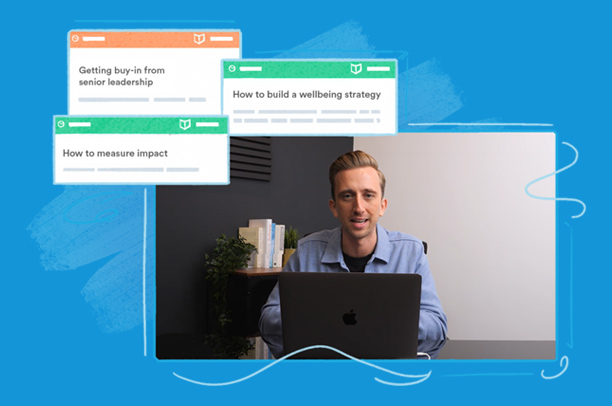Previously many businesses chose to adopt a wellbeing strategy that primarily uses an Employee Assistance Programme (EAP). However, often this method has proven to be ineffective in its success in improving employees’ wellbeing.
What is an Employee Assistance Programme?
An employee assistance programme is an employer-paid scheme that offers employees confidential support and advice. Common issues employees like to address with an EAP tend to be financial issues, mental health problems, or worries in their role.
EAP support can be offered face to face, online, or over the phone. Ideally, an EAP needs, and can, include anything that is required to meet the needs of the business in supporting employee wellbeing.
Is Employee Wellbeing A ‘Tick-Box’ Exercise?
For years, businesses have seen employee wellbeing as a ‘tick-box’ exercise as something they are obliged to do. Now in part, these businesses are right; it is something they ‘have to do’. All employers have a legal responsibility under the Health and Safety at Work Act 1974 and the Management of Health and Safety at Work Regulations 1999 to do all they reasonably can to support the health, safety and wellbeing of their employees. This includes both mental and physical health. However, employee mental health and wellbeing needs to be more than a ‘tick-box’ exercise, and employers are starting to recognise this.
What are the Caveats of an EAP?
Substandard Support
Response to mental health has always been reactive. The concern of an EAP isn’t so much that it is underutilised by many employees but that it is ineffective in its efficacy. When employees do try to seek support through the programme they aren’t rewarded with the correct support, which is either below standard or entirely blank.
For an employee who is currently struggling, trying to seek help that is considered available to you, is substandard, can result in aggravated symptoms. In turn, employees seek external help in the form of therapy at an extra cost to them.
This is not a bad thing as EAPs can be useful when employees need specialist support. But when national statistics tell you that 1 in 4 people will experience a mental health problem each year, shouldn’t we be doing all we can to prevent our employees from getting to this point?
A recent Forbes article articulated this concept well, using the following comparison:
“Let’s say you are going to take a road trip with your family. If you knew that the chances were high that you would get in an accident or caught in a snowstorm while on the road with the most important people in your life in the car, would you drive a car that you thought was unsafe may break down? The same logic should apply to the employee benefits and support programs you offer. Would you intentionally put your most valued asset in harm’s way by providing something that is unlikely to help them and is, in effect, a check-box benefit?”
Forbes
Your answer is no. So why are so many businesses still offering an EAP as their primary support program for employee wellbeing?

Mental Health Support Has Grown
Businesses who have noticed their EAP has proven ineffective have chosen to invest in other means of support instead. Mental health support in the workplace has grown, and when one system fails to provide the right assistance, there is an abundance of other options to choose from. More robust, personal and on-demand support has become available to employees and have proven to be more effective and efficient.
Conversations Are Less Stigmatised
As mental health has become less stigmatised, so have the conversations surrounding it in the workplace. This has created a shift in how and when suffering employees seek for the right support. This not only fosters a more personal approach but it prevents further issues and removes the need for an EAP.
Furthermore with the pandemic outbreak, businesses with the budget to do so have taken a universal approach in supporting their employees mental health. An array of solutions exist from tech-focused to internal mental health professionals, flexible working and childcare support.
So Why Retain an EAP?
This is entirely down to company preference and its ROI. An EAP offers widespread support for a number of issues that might be useful for someone with very little knowledge or experience in mental health themselves. The real question is how utilised is it in your business in comparison to other benefits that might be advantageous in other ways. Look at the other benefits you offer and understand that you’re providing specialised support for employees’ issues. If you feel the other benefits outweigh an EAP, then it is worth reconsidering its need.
If you can afford to offer a robust EAP system in place, then don’t be afraid to keep it. Employees will always run into troubles, (whether personal or professional) no matter how positive the company culture. The idea of implementing mental health support into the workplace isn’t to banish mental ill-health entirely, that would be impossible. Instead, it is important to have the right protocol in place to help prevent and manage issues.

The Approach To Employee Mental Health and Wellbeing Needs to Change
It is simple: employers need to be more than reactive when it comes to the mental health and wellbeing of their employees. At Everymind, our approach to mental health echoes the requirements of the employers’ duty of care. Our work is based on our three wellbeing pillars: promote, provide and protect. If, as an employer, you have initiatives in each of these three pillars, you are likely to be fulfilling your duty of care to your employees and thus preventing the likelihood of an employee needing crisis support.
Pillar 1: Promote. The promote pillar aims to create a healthy working environment by removing as many workplace stressors as possible. It focuses on the causes of stress and involves reducing the stigma around mental health, increasing awareness and creating a supportive environment for employees to excel.
Key interventions within this pillar are:
- Job skill training
- Workload management
- Employee recognition
- Mental health awareness
- Mental health champions
- Creating a wellbeing forum
Pillar 2: Provide. We recognise that not all stressors are in the employers’ control and some individuals may be at higher risk of stress or mental ill-health than others. Therefore, with this pillar, we aim to improve individual employee reactions to stress by educating them on effective ways to manage and respond to stressors.
Key interventions within this pillar are:
- Stress management training
- Coaching
- Mentoring schemes
- Senior manager training
- Wellbeing workshops
- Providing self help strategies
Pillar 3: Protect. The aim of the protect pillar is to minimise the damaging consequences of any stressors by helping individuals to cope more effectively. This stage is reactive, and understands that some individuals may seek specialist assistance with their mental health needs; therefore focusing on problems once they have occurred.
Key interventions within this pillar are:
- 24/7 counselling
- Mental health first aiders
Takeaways
The real caveat to an EAP is if it’s put in place as a ‘tick box’ exercise or is implemented as a ‘nice to have’ and goes unused. A key pillar in ensuring employees are looked after is informing them of the available support. It is no use to sell an idea to employees if they won’t understand or be able to access it. EAPs cost companies around £14 per employee and against other investments, this might mitigate the need of it alone where budget can be used elsewhere.
By providing a comprehensive and holistic approach to your wellbeing strategy you’re able to drive away additional costs and risks to employees. In addition, you’re enhancing motivation, performance and increasing a positive company culture attracting and retaining strong talent.
So has your opinion of an EAP changed? Do you think it’s the best option for your business?
If you’re looking for a partnership approach, taking the guesswork out of mental health support saving you time, budget and resources then don’t hesitate to reach out. You can enquire here today for a free strategy call.








